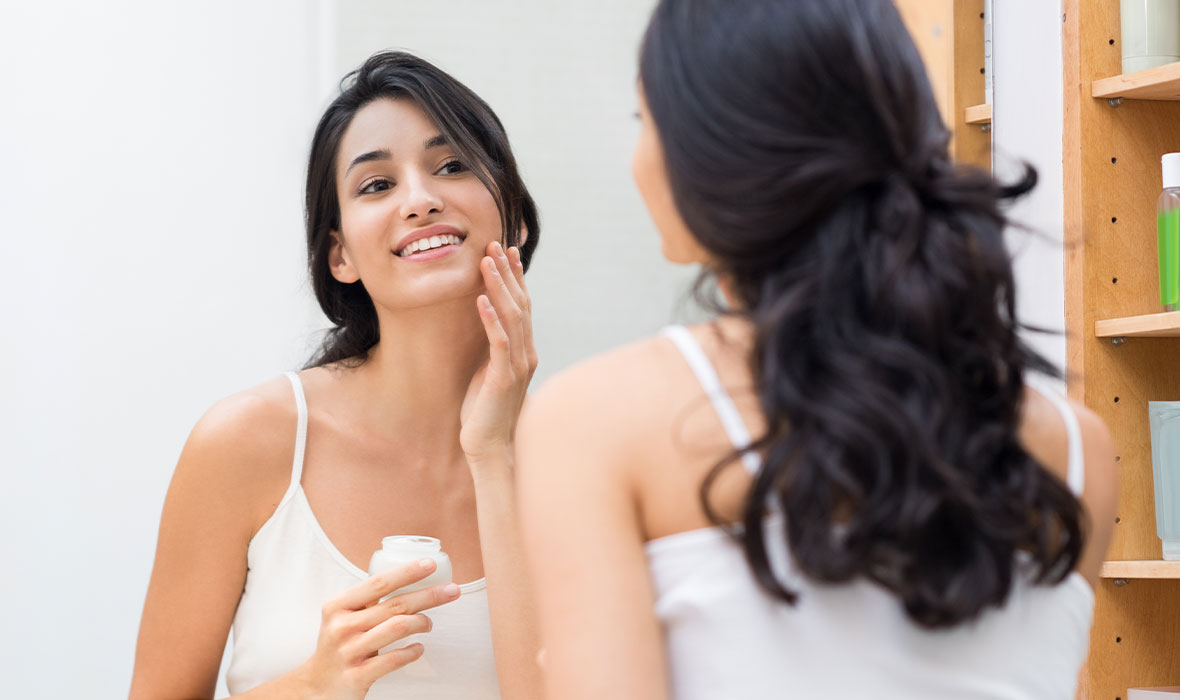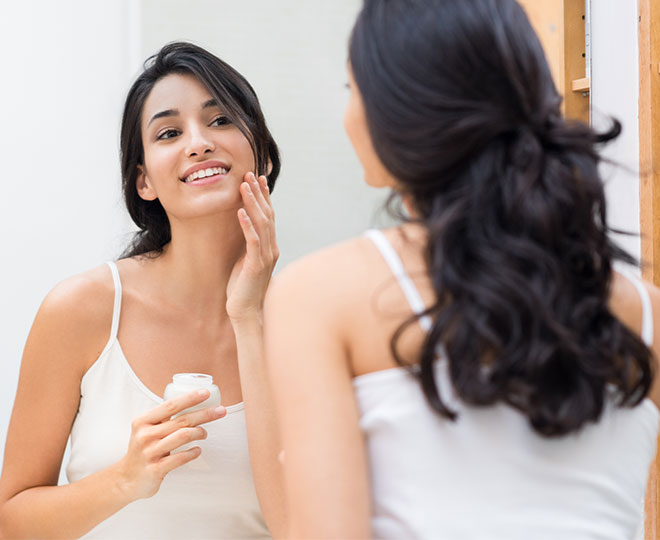If you’ve ever wondered, "What is combination skin?" or "How do I treat combination skin?" this article is for you. Simply put, having combination skin means that some areas on your skin are dry and others are oily. When different parts of your skin have different needs, it can create all sorts of questions about how to approach your skincare routine. Combination skin can be a challenge to deal with, but it’s not impossible – and we can help make it easy. Let’s investigate how to know if you have combination skin and discuss how to best treat it.
7 signs you have combination skin
-
1. You have both dry skin and oily skin, depending on the area.
The most basic sign of combination skin is experiencing both dry and oily skin at the same time. Oily skin experiences acne at a higher frequency, is shiny and has larger-looking pores. Dry skin tends to experience flakes, redness and tightness.
-
2. You have scattered patches of oiliness shortly after washing your face.
Just after cleansing, you might not notice a difference between combination skin and any other skin type. But, 15-20 minutes after cleansing your face, you may see that patches of oiliness start to emerge only in certain places. Try dabbing off the oil with blotting paper or paper towels throughout the day.
-
3. Your breakouts and dry areas occur at the same time.
With combination skin, you’ll probably experience your breakouts in areas your skin has excess oil. Because a lack of oil is one cause of dry skin, a mixture of breakouts and dry skin in different areas at the same time is a telltale sign of combination skin.
-
4. Moisturizer for normal skin works on your cheeks, but your t-zone looks extra oily.
Moisturizing is a very important part of any skincare routine, but combination skin demands mattifying ingredients along with hydrators with a low oil content.
-
5. The pores on your nose are larger than on your cheeks and jawline.
Products containing active ingredients can help keep pores from clogging. These are especially beneficial in areas your pores are larger and more susceptible to getting blocked.
-
6. You sometimes get dandruff on your scalp.
Dandruff isn’t always a perfect sign of combination skin, but women with combination skin often have dry patches on their scalp.
-
7. Weather affects your t-zone’s appearance.
If you have combination skin, hot weather can cause oily areas (like your t-zone) to get shiny quicker than normal. And, dry cold weather can cause dryness in some areas and an overproduction of oil to compensate for the dryness if you don’t adequately moisturize.
How to treat acne when you have combination skin
Everyone’s skin is unique, and this is even more important to remember when treating acne when you have combination skin. You should start with a conservative approach for each treatment, increasing the dosage and frequency of application once you know it works for your skin.
Looking for products for combination skin? Consider Proactiv Solution® which was designed especially for acne-prone skin to help stop acne-causing bacteria and prevent new breakouts from forming.
The bottom line
Combination skin can be confusing to deal with. Make it easier with the proactiv® acne treatment system that’s right for you, and give your unique skin the care it deserves!






